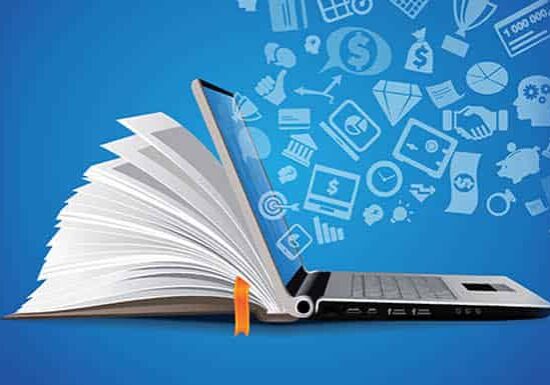Discover Cutting-Edge AI Tools Designed to Simplify Your Daily Tasks
The Role of Technology Education in Shaping Tomorrow's Workforce: Insights for Educators
As the landscape of employment proceeds to develop under the impact of technical developments, the role of technology education and learning ends up being increasingly critical in preparing trainees for future occupations. Educators are charged with equipping students not just with technical efficiency but also with crucial soft skills such as crucial reasoning and partnership. By examining cutting-edge curricular techniques and fostering collaborations with industry leaders, we can much better understand just how to properly grow a workforce that satisfies the needs of a digital economic situation. What methods can instructors utilize to link the space in between education and market assumptions?

Relevance of Technology Education
In a progressively digital globe, the significance of innovation education can not be overstated. As sectors progress and integrate innovative innovations, a versatile education and learning in innovation becomes crucial for both personal and specialist development. Innovation education furnishes people with the abilities needed to navigate the intricacies of contemporary offices, promoting flexibility in an atmosphere characterized by fast change.
Furthermore, modern technology education advertises critical thinking and analytic abilities. Grants. By engaging with numerous technological tools and systems, students improve their capacity to analyze information, draw connections, and develop ingenious remedies to real-world troubles. This educational focus not only prepares trainees for details careers but likewise cultivates a frame of mind that is vital for long-lasting knowing
In addition, innovation education and learning plays a crucial role in bridging the digital divide. By supplying equitable accessibility to technical sources and training, schools empower all students, no matter socioeconomic status, to join the digital economy. Finally, as we move further right into the 21st century, prioritizing modern technology education and learning is imperative for preparing a skilled workforce capable of growing in a significantly interconnected and technically driven global landscape.
Trick Abilities for Future Labor Force

In addition, efficiency in digital literacy is important; employees need to browse a variety of software program devices and systems efficiently. Collaboration skills are also paramount, as most modern-day offices stress team effort throughout varied, usually remote, settings. Imagination and development will be crucial in driving the growth of brand-new options and products in a competitive market.
Understanding information analytics and cybersecurity principles is significantly crucial, mirroring the expanding importance of data-driven decision-making and protecting delicate info. Finally, a fundamental understanding of expert system and device learning will certainly empower future specialists to take advantage of these technologies successfully.
Educators must as a result prioritize the combination of these abilities into their innovation educational program, guaranteeing students are fully equipped to meet the demands of a vibrant job market. By fostering these expertises, we prepare learners not just for their initial jobs, however, for long-lasting professions in an ever-evolving technical landscape.
Integrating Technology in Educational Program
Incorporating technology into the educational program is essential for contemporary education and learning, with 85% of instructors acknowledging its significance in improving pupil involvement and learning results. As innovation proceeds to develop, universities should adjust to prepare pupils for a future where digital proficiency is critical. This combination entails not just using electronic devices but also the unification of ingenious resources that promote important reasoning, creative thinking, and cooperation.
A well-structured modern technology curriculum ought to align with academic requirements while attending to the diverse knowing requirements of trainees. This can consist of a mix of on-line systems, interactive software application, and multimedia resources that accommodate different learning styles. Furthermore, educators must obtain ample training to successfully carry out these innovations, guaranteeing that they are geared up to help with a technologically enriched understanding setting.
Additionally, incorporating modern technology into the curriculum enables real-world applications, bridging the void between academic understanding and functional abilities. By engaging students with appropriate and immersive experiences, instructors can cultivate a labor force that is not only highly skilled but ready and likewise adaptable to satisfy the challenges of tomorrow's task market. Emphasizing innovation in education and learning is not simply a fad; it is a requirement for forming skilled future professionals.
Ingenious Teaching Techniques
Welcoming innovative mentor strategies is important for cultivating a effective and appealing understanding environment in today's academic landscape. In innovation education, instructors need to use approaches that not just record pupils' interest but likewise furnish them with the skills required for future jobs. One effective approach is project-based discovering, which motivates students to take part in real-world problems, promoting essential thinking and partnership.
In addition, incorporating gamification can enhance motivation and retention, making intricate principles more delightful and easily accessible. Grants. site web Turned class, where students review educational web content in the house and participate in hands-on tasks throughout class, also confirm useful by taking full advantage of classroom communication and application of expertise
Furthermore, utilizing technology-enhanced knowing tools, such as simulations and online labs, permits students to experiment and discover in a risk-free setting, fostering innovation. Customized finding out experiences, tailored to individual trainee needs and finding you can check here out styles, can further enhance involvement and achievement.
Inevitably, by incorporating varied and cutting-edge teaching approaches, educators can develop a dynamic discovering environment that prepares students for the challenges of tomorrow's workforce, ensuring they are not only well-informed yet additionally versatile and experienced.
Collaboration With Market Partners
Working together with market partners is essential for linking the void in between education and the workforce. Such collaborations offer trainees with practical insights and experiences that are important for their professional advancement. By engaging with organizations, teachers can better line up curriculum web content with the abilities and proficiencies that employers look for. This placement makes sure that trainees are not just fluent in theoretical understanding yet also have the hands-on experience required for their future jobs.
Sector collaborations can take many kinds, including internships, mentorship programs, and visitor lectures. These efforts enable pupils to apply their discovering in real-world contexts, promoting a deeper understanding of market criteria and assumptions. Moreover, these partnerships can lead to the growth of customized programs that address specific labor force requirements, improving the significance next page of technology education and learning.
Additionally, sector partners can add sources, such as devices and funding, that enhance instructional offerings. By promoting a culture of collaboration, educators and industry leaders can interact to cultivate a skilled labor force that is prepared to satisfy the obstacles of tomorrow. Inevitably, these collaborations are vital for producing a smooth shift from education to employment, benefiting both students and companies alike.
Conclusion
Finally, technology education and learning works as a cornerstone for creating a proficient labor force qualified of browsing the complexities of a digital economy. By stressing important skills such as electronic literacy, creativity, and information analytics, educators can improve student preparedness for diverse job chances. The integration of cutting-edge teaching approaches and partnership with industry companions even more improves the discovering experience, ensuring that trainees are not just geared up with expertise yet likewise prepared to fulfill the demands of an ever-evolving work market.
As the landscape of employment continues to advance under the influence of technical developments, the role of innovation education and learning becomes progressively crucial in preparing trainees for future jobs. As industries progress and integrate sophisticated technologies, a well-rounded education and learning in modern technology becomes essential for both professional and personal advancement.Incorporating technology into the curriculum is necessary for modern-day education, with 85% of educators recognizing its significance in improving pupil involvement and learning outcomes. In technology education, teachers should use methods that not only capture students' rate of interest however likewise furnish them with the skills needed for future professions.In final thought, innovation education serves as a keystone for creating a competent workforce capable of navigating the intricacies of an electronic economic situation.